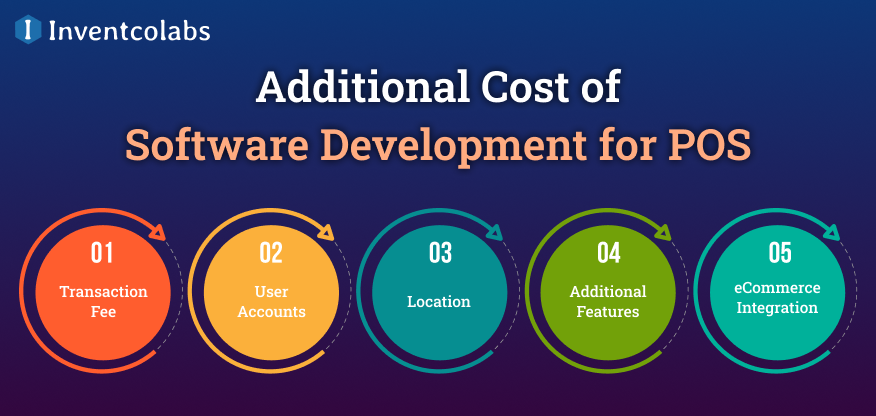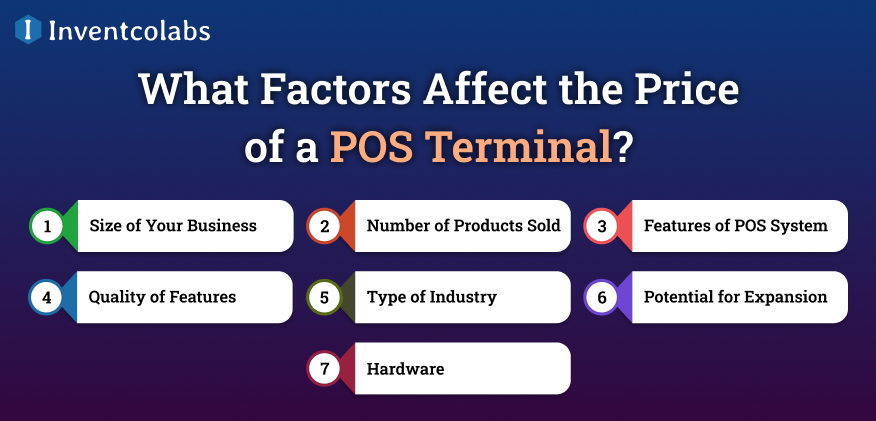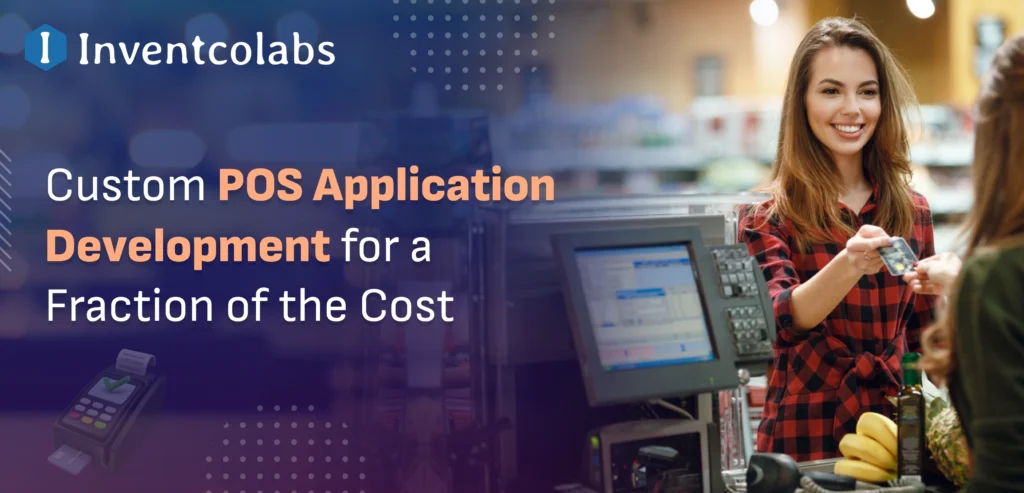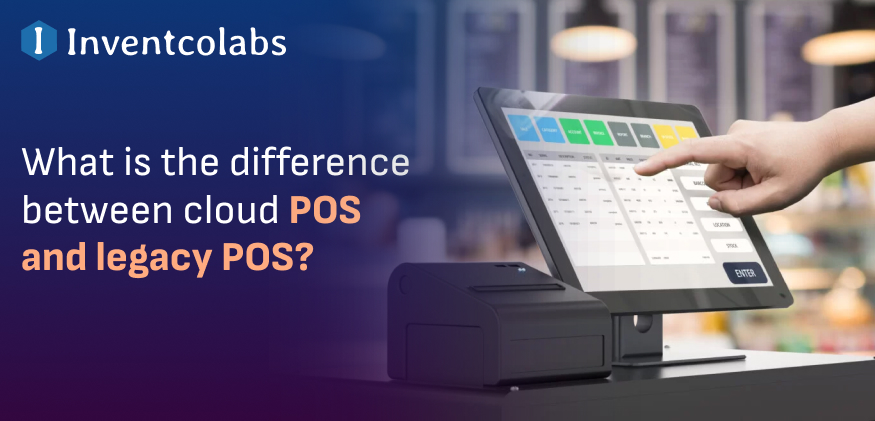Are you running a Retail Business? Well, then, you must already understand the necessity for POS Software Development. At its core lies every transaction, thus defining an ideal Retail POS Software as more or less simply processing customer purchases quickly while managing payments and recording sales quickly.
An experienced POS software developer provides solutions that go well beyond simply selling products; instead, they enable businesses to use emerging and available technologies more effectively. From managing inventory and customers, empowering staff, tracking sales, and rewarding loyal customers to getting your pricing just right, these play vital roles. All these are what a quality Retail POS can accomplish for them.
If you’re curious about developing POS software, this blog is undoubtedly for you. Here, we will cover custom POS development costs, features, and the entire development process.
As part of your search for an adaptable POS software solution, you must find an experienced and skilled POS Development Company. When choosing one, always keep your needs in mind—this includes whether or not to opt for traditional or mobile POS.
Features to Consider for POS Applications
Custom POS Software Development can be an intricate process. Businesses should keep abreast of emerging trends when undertaking custom POS development services and add these advanced-level features into their systems for maximum benefits.
- Integrate: You expect your point-of-sale system to fulfill various functions, such as bookkeeping, employee administration, and inventory control.
To fully take advantage of all these functions, you need POS software that can easily integrate with different modules that streamline this system.
- Employee Management on POS: Making It Easier With this integrated feature from POS, you can Take control of all aspects of employee management across departments, from their clock-in/clock-out times and schedules to payroll—just to name a few!
1. Customer Relationship and Experience
A POS system can help improve customer relationships and experiences. It can store customers’ purchase histories to create personalized experiences based on those purchases.
Through this process, you would better understand the target customers of your products or services who may purchase from you.
- Stock Management: Inventory control can be an arduous and time-consuming task that a POS system can help simplify. Both large and small businesses can efficiently update and count their stock.
- Reporting and Analytic: Establishing reports is often intricate and laborious for any business. Hiring a POS system development company with expertise in creating systems capable of tracking sales & inventory and creating reports using that data can make the process more manageable and accurate.
2. Easy Access Is Essential
Accessibility should also be an integral component of the POS application development process. Work with your developers to design a system that is accessible on mobile and tablets—make it accessible anywhere and at any time!
Here is a list of features of POS systems you should include to maximize their effectiveness –
A system that streamlines purchases enhances and maintains customer relations, provides reliable security measures, offers robust reporting, is advanced billing system-compliant, and has a content management system for stock information maintenance and discounts. These are some features to look for when considering business systems supporting purchases and customer relationships.
Explore More: How To Build A Point Of Sale (POS) System – Complete Guide
Components of POS Software Development Cost
A point-of-sales system’s costs consist of two main elements: software and hardware costs. Credit card processing fees play an important role here, so to select suitable POS options you must compare transaction rates and fees (such as monthly charges and PCI compliance costs ). A small discount could save hundreds in the long run, so doing the research pays dividends; additional features and integrations may alter these prices further; let’s now go over some fundamental elements here:

1. Cost of POS Software
Depending on the type and model of POS, its monthly costs range between $10 to $250 monthly. There are three primary forms of POS software:
Hybrid POS offers a hybrid setup that combines cloud and on-premise point-of-sale (POS) systems. These systems are traditionally known as SaaS models. On-premise systems include legacy or on-premise legacy POS programs hosted on local servers or at local businesses. Hybrid POS combines cloud with on-premise POS solutions.
On-premise POS systems usually have higher initial costs for hardware and installation; however, their long-term costs of sale tend to be less expensive. This makes an on-premise POS suitable for retail stores, while cloud-based POS solutions tend to be used more commonly by restaurant owners.
2. Hardware Cost
POS hardware typically ranges between $20 and $2000 and generally refers to equipment used to process customer orders and payments. Most businesses need the following items in their POS system to process payments:
- Reader for cards (ranging from $20-50)
- Tablet stand ( $50-200)
- Barcode scanners (30-100)
- Receipt printer (35-155)
- Cash drawer/Till (5-200)
- Touchscreen computer (25%-80%)
- Menu boards with digital menu displays are amongst some of the items required for operation of any business.
- Kiosk: $200-700
Many retailers or restaurants prefer taking transactions directly on the sales floor or tables, using special hardware devices like portable card readers to fulfill this need. Other forms of POS require different hardware pieces that may be shared between stores – though specific card readers are available as a practical solution here.
3. Payment Processing Fees
Merchants often need to pay more attention to the costs associated with payment processing fees, which can quickly add up. They’re an ongoing expense that must be carefully researched. Therefore, take time to research your options before making your selection.
Beginners in payment processing must be aware that when clients use debit or credit cards to complete a transaction, a processing fee must be paid to complete it. Bambora and Global offer payment processing solutions for credit card transactions at competitive fee prices.
Certain POS vendors process card payments (Square, for instance), while others provide integrated payments. Depending on the scale of your business, expect to pay at least 2.6 percent plus a small transaction cost per transaction. When selecting hardware, it should work seamlessly with the POS system and provide optimal performance. Many firms even provide discounts if customers select preferred payment processors.
Explore More: Grocery Delivery App Development Essential Features & Cost Estimation 2024-2025
Additional Cost of Software Development for POS
Apart from hardware and software development costs, point-of-sale systems come with numerous other associated charges, which may include:

- Transaction Fee: Your fee per credit/debit card transaction usually depends on the total amount of your customer’s purchases plus a small percentage fee.
- User Accounts: Certain POS software restricts employee logins to specific plans; additional costs must be incurred if your employees require more logins.
- Location: Like user accounts, any hardware required to support more locations – for instance, extra cards or registers – will cost more.
- Additional Features: Modern POS Software Development Solutions offer more than a payment. Other features like reporting sales data, inventory control, and loyalty administration are typically provided free of cost; however, more options can be purchased if desired.
- eCommerce Integration: When running an online and physical retail store, synchronizing sales data across both channels is vital for a smooth customer experience.
What Factors Affect the Price of a POS Terminal?
Not all point-of-sale systems are created equal, and even the best might not fulfill all your specific requirements. Here is a checklist to help you select your POS system of choice.

1. Size of Your Business
This factor plays a huge role in determining the price of POS software plans since each additional register or location usually costs extra. A tiny market stall or mall kiosk with no expansion plans may qualify for free POS software! Various providers also specialize in franchise businesses.
2. Number of Products Sold
While certain providers allow you to sell an unlimited number of products (or have an uncapped turnover), others limit you based on your chosen pricing plan regarding how many listings/sales can occur at one time.
3. Features of POS System
One of the least surprising cost factors is how many features your POS system contains; after all, comprehensive systems tend to cost more. If you need help selecting which capabilities best serve your business needs, check out some must-have POS features here.
4. Quality of Features
Most POS systems feature analytics capabilities that display data. Some are more complex than others and could provide more advanced data-crunching options to streamline a large business’s operations.
5. Type of Industry
Restaurants and retail are among the leading industries with specific POS systems tailored specifically for them, although many niche industries such as pizza delivery tracking or perishable waste management also employ such systems.
6. Potential for Expansion
What’s Your Five-Year Plan for Your Business? When expanding to new locations, consider any additional POS fees your POS vendor might charge you. While migration may be possible later on if necessary, selecting an easily expandable solution that aligns with your growing company could save both time and effort.
7. Hardware
Some POS providers work with third-party peripherals like receipt printers and iPads; however, other platforms only support their own equipment. Make sure you understand where your provider stands before committing.
Explore More: Comprehensive Guide to Grocery Delivery App Development in 2024 – 2025
How Much Does Basic POS Equipment Cost?
Cloud-based POS is often the go-to solution for small businesses, as it does not require bulky hardware or multiple drives to store information. A basic POS system typically costs approximately $69 a month with one register, and hardware costs start from about $1300 initially—an economical alternative compared with standalone systems.
On-premise Restaurant POS system is more affordable in the long run since only one-time fees are necessary. Furthermore, Open Source POS don’t impose specific brand hardware on you and allow you to pick whatever suits you best when building out your POS system.
Which Factors Impact the Cost of a POS System?
Market dynamics and customer interaction patterns are rapidly shifting. If businesses do not adapt to technological innovation quickly enough, severe consequences will ensue—one recent need is the development of POS applications.
POS, or Point of Sale systems, allow businesses to conduct sales in brick-and-mortar locations and brick-and-mortar locations and online stores.
According to a survey, the global POS software market was estimated at USD 9.29 billion in 2020 and is projected to experience compound annual compounded annual growth at a CAGR of 9.5% through 2028.
Customers nowadays prefer not to wait in long queues at cash registers. In today’s technologically driven world, point-of-sale systems help accelerate sales processes while streamlining billing, promotions, returns, and other processes with extreme ease.
Here are a few factors that affect the cost of a POS system: Companies charge fees based on sales volume; for instance, monthly subscription fees could range up to 2.5 percent, and you could pay as much as 2.5 percent per transaction for services provided.
Establish the monthly sales volume and account for any taxes your point of sale provider mandated.
These mandatory costs can quickly add up over time. But don’t fret: POS Nation won’t charge any transaction fees! Start accepting customers now without fearing losing a portion of your profits!
Do you maintain an Extensive Inventory with Multiple SKUs? In some instances, point-of-sale vendors might charge additional fees to manage such large databases, which may deter larger businesses.
Our retail store inventory system is one of the most robust available on the market. It supports an unlimited number of products or SKUs in your company—no one else compares!
Upload an array of products or individual items directly into a database, keeping track of details like UPCs, vendor names, department categories, the day’s price of sale, and the associated cost.
1. Features
In some instances, point-of-sale providers charge additional features. Most vendors offer basic plans with just the basics included; however, add-ons like gift cards, reporting, or label printing could incur an extra cost.
Our POS software development features cloud-based features like an efficient report dashboard and virtual back end. At the same time, all our packages provide access to popular features used by companies within your industry.
2. Locations
Your company’s size and scope could affect pricing for point-of-sale (POS) systems. In most plans, each additional register or location incurs extra costs.
Other vendors also provide plans that can accommodate an unlimited number of outlets, registers, and locations; however, POS Nation stands apart by supporting both single-location companies and organizations.
Certain vendors provide paid support services to assist their customers in getting the most from their computers, but POS Nation stands out from competitors with our superior customer service—every point-of-sale system comes complete with free access to our video training library!
Customers frequently opt to join our support program monthly to benefit from additional hands-on and video-based training opportunities. Our onboarding program also helps your staff members become operational quickly.
Explore More: What Is the Difference Between E-Commerce and M-Commerce?
Conclusion
In this blog, we have explored how to build a POS system. When working with a POS software developer, it is vitally important that they meet both your requirements and provide value for money. When hiring one or developing it yourself, seek a well-known custom POS software development company like ours that could assist. Our POS development team is focused on producing results tailored to the business goals.
With technical advancement and high-quality responses, we ensure you can easily understand a complex subject matter. Our software consulting services provide highly scalable, flexible, and future-ready software consulting that delivers impressive and engaging solutions. At the same time, we also provide ongoing updates and system support as required.





